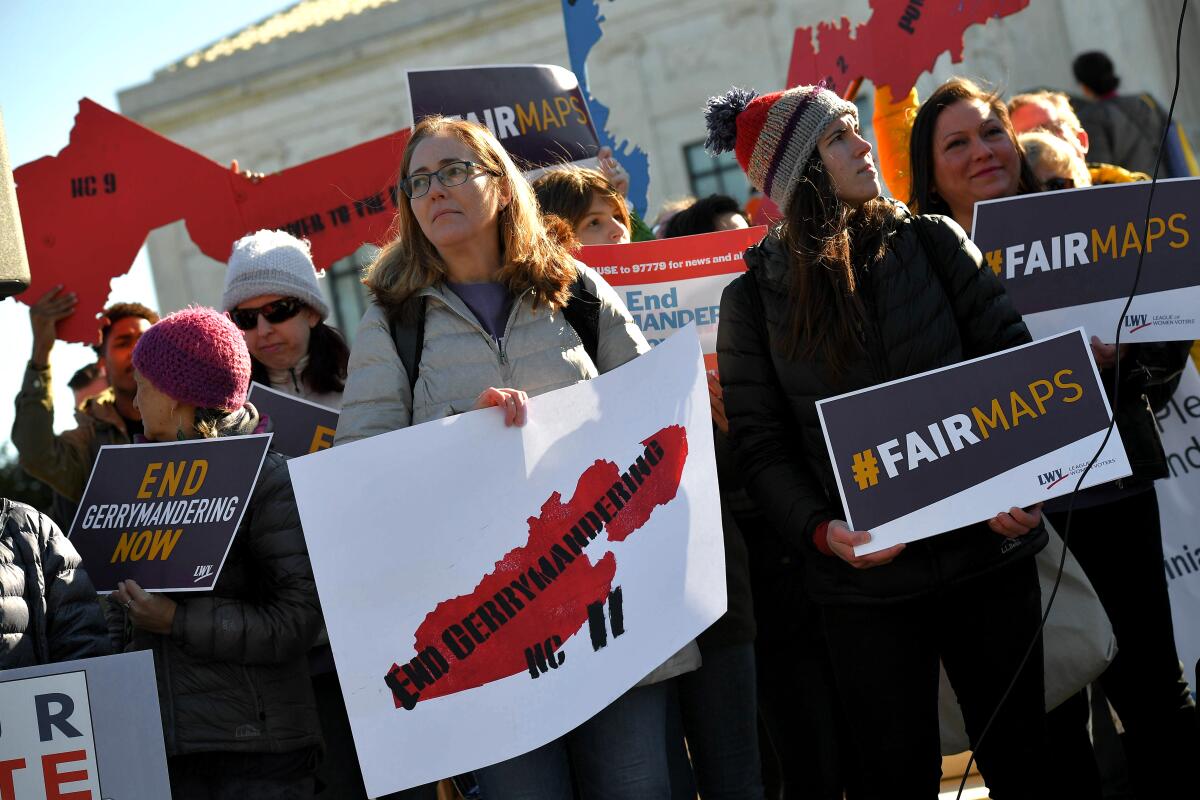Editorial: If you care about protecting democracy, you should care about redistricting too

- Share via
California is going to lose a congressional seat this year because its population grew slower than other states over the past decade. Which of the 53 seats will disappear in 2022 is still an open question, though the odds favor one of the 18 that represent parts of Los Angeles County.
Could it be yours? Why, yes, it could. And if you care about who your state and congressional representatives are (and you really should) or whether your community is lumped into a district with a community that has, shall we say, a different political outlook, there is something you can do about it: Reach out to the state’s independent redistricting commission and share your thoughts before the new political districts are completed later this year.
We understand that thinking about and commenting on potential political districts is not going to top most people’s daily “to-do” lists, especially in a state in which the Democratic party dominates politics. Why bother? But consider this: Elected officials and political operatives are not shy about pushing their views and would be fine if ordinary citizens stay out of a process that used to be their domain.
California is one of the few states in which the once-every-decade process of redrawing congressional and state legislative political districts is conducted in public by a nonpartisan independent commission rather than by elected officials or their appointees, the way most states do.
Unsurprisingly, maps drawn up by politicians aren’t always constructed with the interests of voters in mind and, in fact, are often cobbled together in exceedingly odd arrangements with the intention of helping the dominant political party hold onto its power, often at the expense of communities of color. That’s not good for democracy, which is why voting reform advocates in other states have fought for the same independent redistricting system that California uses. Independent redistricting is also one of the key reforms in HR 1, the voting rights bill that is stalled in Congress.
This is only the second time that a California Citizens Redistricting Commission has been convened since it was established by voters in 2008 under Proposition 11. And getting more public input is super important this time around because the COVID-19 pandemic delayed U.S. census data and made it difficult for the commission to do in-person public outreach.
Public hearings have been going on all year, but there is still time for people to comment before the maps are finalized at the end of December. There won’t be draft maps until mid-November, but there are “visualizations,” or tentative districts, on the commission’s website at wedrawthelinesCA.org as well as a comment form. You can also email the commission at [email protected] or send a letter to the commission’s Sacramento headquarters.
There’s no guarantee that all individual requests will be honored. The commission has criteria it must follow in the creation of political districts that are mandated by law that may override the desires of some communities. But by not speaking up, you can be assured that you won’t be heard at all.
More to Read
A cure for the common opinion
Get thought-provoking perspectives with our weekly newsletter.
You may occasionally receive promotional content from the Los Angeles Times.










